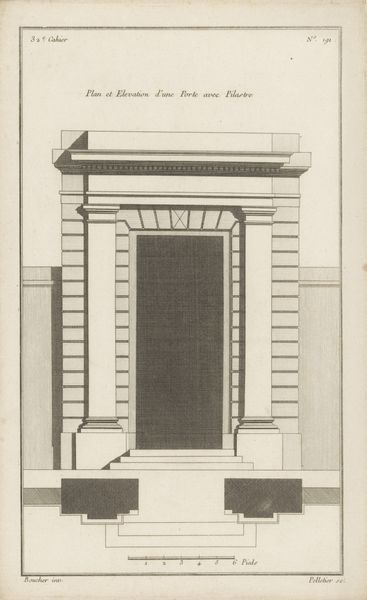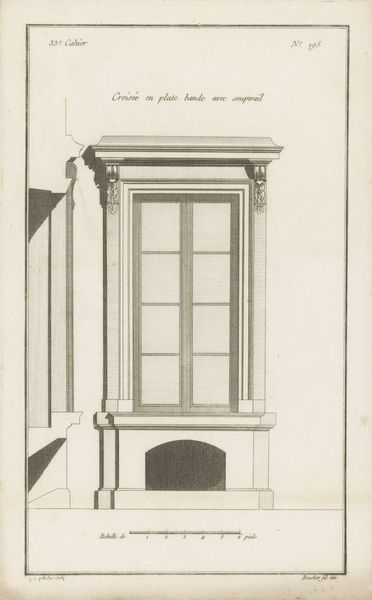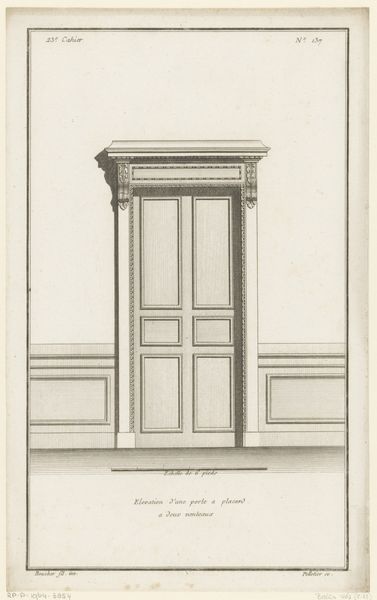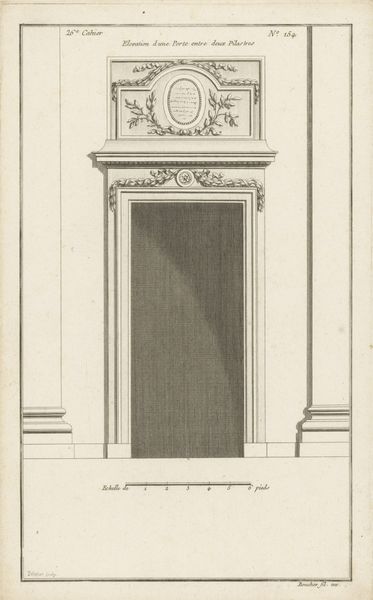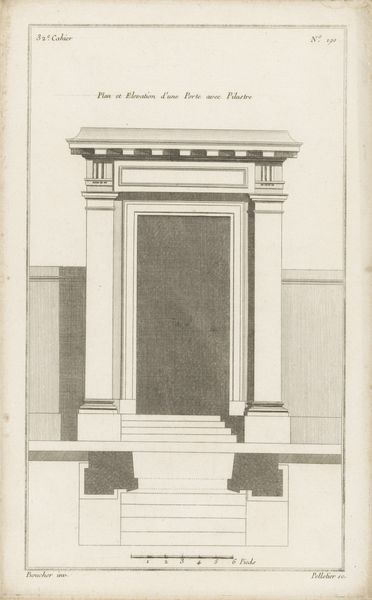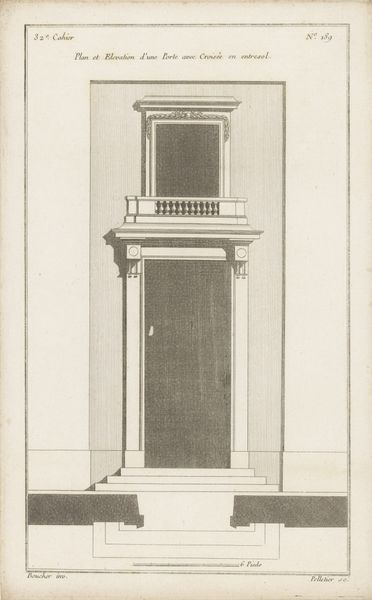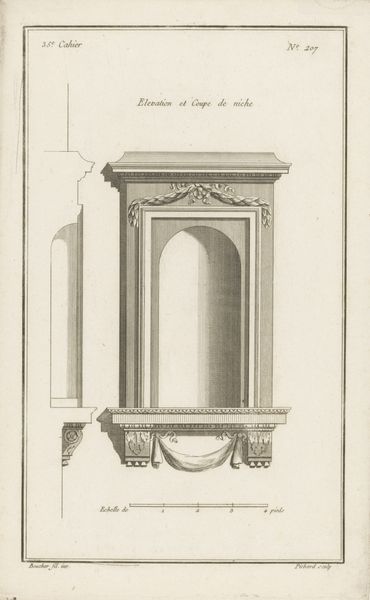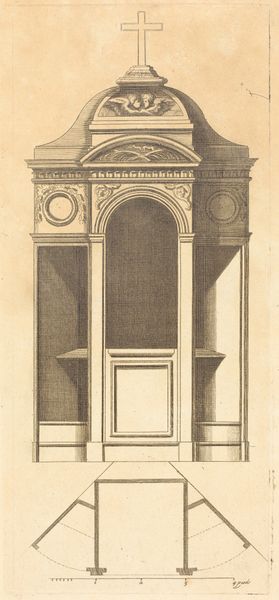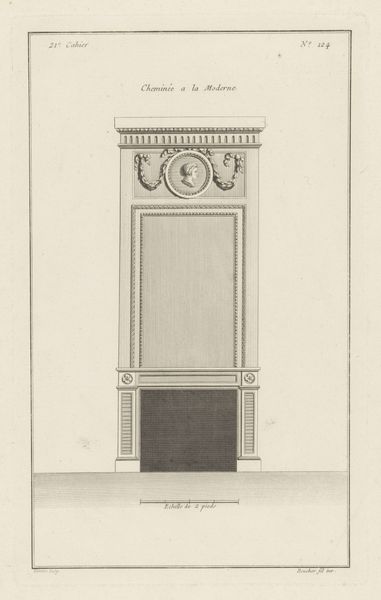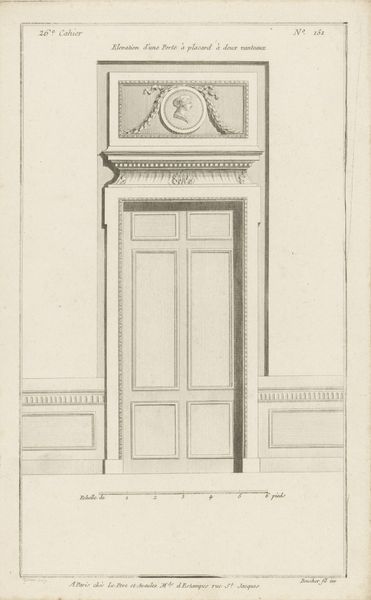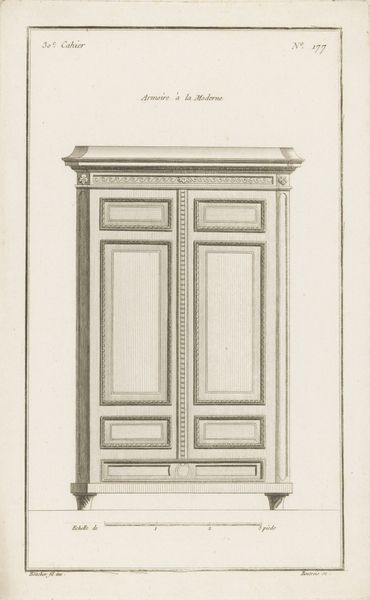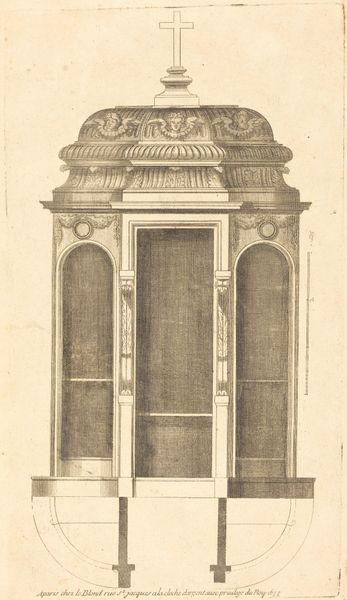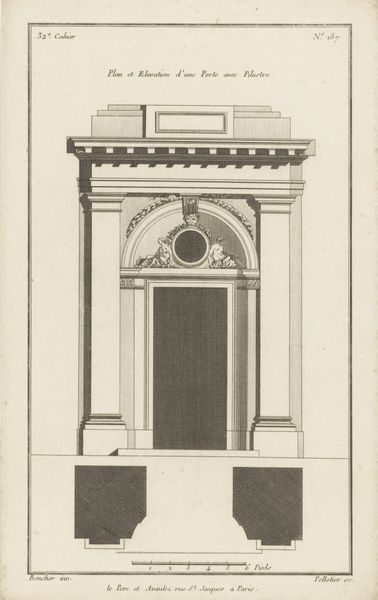
drawing, print, engraving, architecture
#
drawing
#
neoclacissism
# print
#
form
#
geometric
#
line
#
engraving
#
architecture
Dimensions: height 327 mm, width 204 mm
Copyright: Rijks Museum: Open Domain
Curator: Well, isn't this serene? It's just…lines, a whisper of shadow, all humming with potential. Editor: Indeed. What we have here is an engraving from between 1772 and 1779 entitled “Muurnis,” currently residing here at the Rijksmuseum. It's the work of Jean-Baptiste Bichard. What strikes me is the almost mathematical precision, typical of neoclassical architectural studies. Curator: Mathematical! Yes, but don't you find something soothing in its stark geometry? The soft arch nestled in those rigid lines almost feels like a hidden doorway. It's calling to me, promising cool marble and maybe, just maybe, a secret garden beyond. Editor: The use of line and form, that clear aesthetic, was quite deliberate, mirroring the Neoclassical ideals of order and rationality which were en vogue then. Think of it less as a "secret garden" and more as an exercise in the public role of architecture. Bichard wasn’t just drawing a niche; he was participating in the wider visual culture, suggesting a reformed aesthetic that connects back to antique sources. Curator: But what if that order, that rationality, is a facade? Perhaps the lines are hiding something more unruly. That empty space inside the niche, isn't that ripe for interpretation? Maybe it is where dreams can blossom, away from prying eyes, in spite of rigid design! Editor: It could symbolize many things, depending on where and how such a design element would be used. But I think reading it through a Neoclassical lens is essential for its cultural context. Curator: I find it so easy to drift off, get lost in the balance and serenity of this drawing. Maybe a sign it served its purpose in the end? Editor: Precisely, perhaps its lasting legacy rests on the very conversations that the artwork provokes. A neat trick from a set of lines laid down centuries ago.
Comments
No comments
Be the first to comment and join the conversation on the ultimate creative platform.
